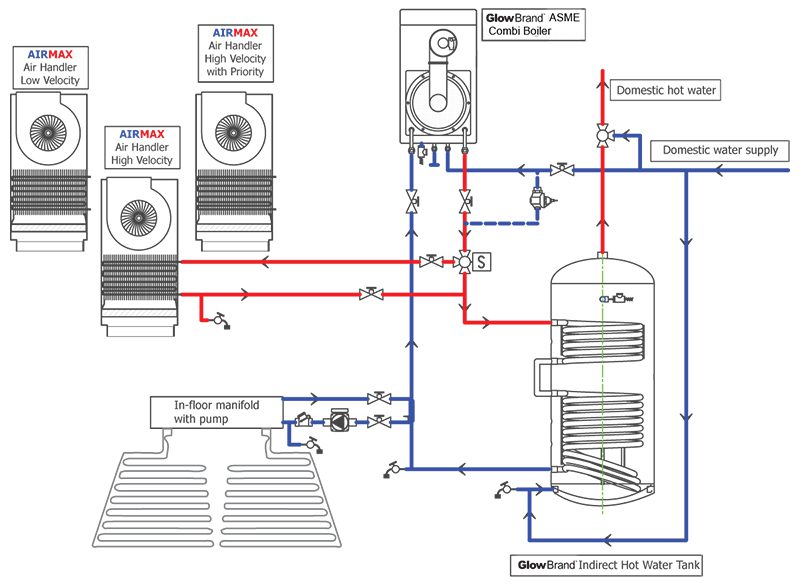GTA Leading provider of heating, cooling, and water heating and treatment needs for over 15 years.
An air handler, or air handling unit, is the indoor part of an air-conditioning or heat pump system. Air handlers work much like furnaces in that they efficiently move air throughout the home. The main difference is that the air handlers only circulate heat when paired with a heat pump or a Hi-Velocity system.
Efficiency is what everyone likes to talk about these days. For air handlers, the blower fan, evaporator coil, and outdoor unit all impact efficiency and performance.
Blower fan speed determines how quickly the air moves across the coil, which in turn affects how much heat can be added or pulled from the air in a given time.
If your HVAC air handler has a single-speed or multi-speed blower, then it uses a Permanent Split Capacitor (PSC) motor and the fan is set to a certain speed at the time of installation.
Once set, a multi-speed blower will run at this same speed, regardless of changing conditions. Only an HVAC professional should change your air handler’s fan speed after it has been set.
A more efficient option is a variable speed blower, which can adjust speeds in real time depending on flow rates, temperatures, and other factors. It accomplishes this by using an electronically commutated motor (ECM).
Indoor air handler evaporator coils come in different shapes and sizes. Some are shaped like a slab, while others resemble the letter “A” or “N.” In addition to the indoor evaporator coil in your air handler, the outdoor unit, be it an air conditioner or heat pump, also contains a coil.
The main thing to watch for is that the indoor evaporator coil is sized proportionately to the outdoor coil. If the sizes are mismatched, either the indoor unit won’t be able to keep up with the outdoor unit or vice versa. That’s why you should always purchase the indoor and outdoor units in a pair.


Hydronic air handlers heat air evenly so that those uber-hot blasts of air don’t shoot out of the vents as they do with conventional heating systems. This is made possible thanks to the machine’s use of a boiler or hot water heater that sends water to hydronic heating coils. The user simply sets his house or zone thermostat to heat his living space and the system pump transports water from the boiler/hot water heater to the aforementioned coil. The water flows through an aluminum tin coil with copper tubing. Return air from the house is then pulled in toward the blower, above the heating coil. The warm air that is generated is then transmitted through the building’s ducts. The system’s water is recirculated to the boiler/water heater for additional heating.
A hydronic air handler can also cool the home as the water within the system can drop by about 20 degrees. Refrigerant is applied via the cooling coil within the air handlers to transfer heat from the recirculated air to the cool refrigerant. The result is the transmission of cool air throughout the home.
GTA Leading provider of heating, cooling, and water heating and treatment needs for over 15 years.

Get 5% off when you sign up for emails with savings and tips.
© 2024 ICARE HOME COMFORT INC. Design by Tensor Canada | Privacy Policy | Terms and Conditions